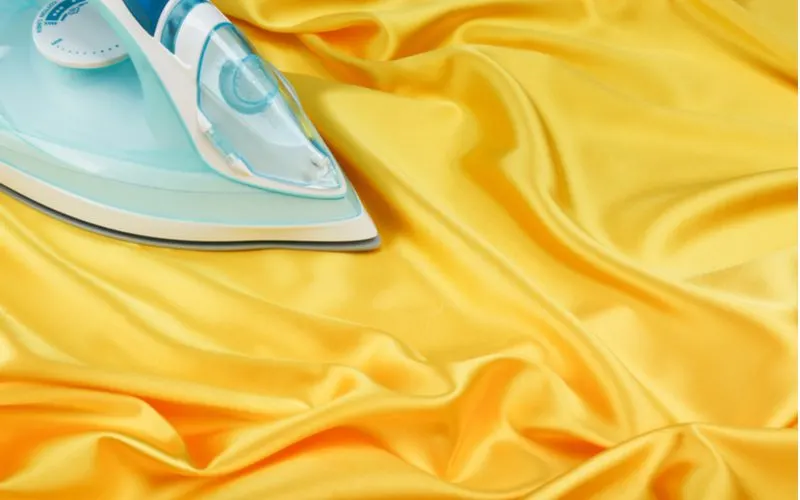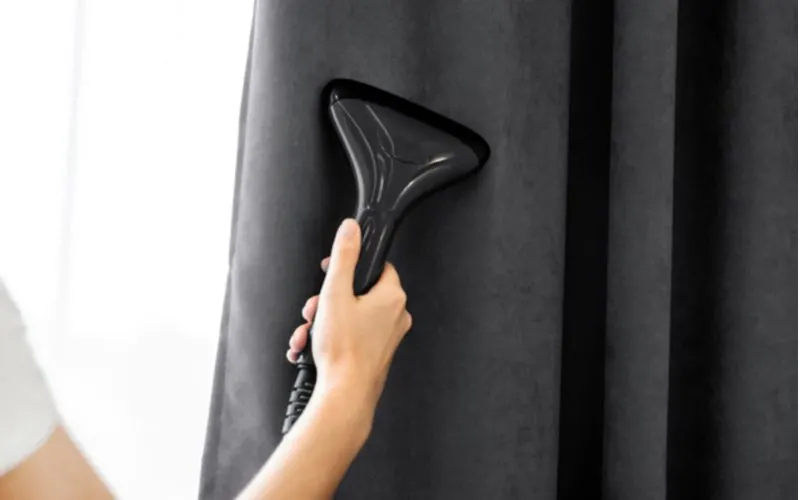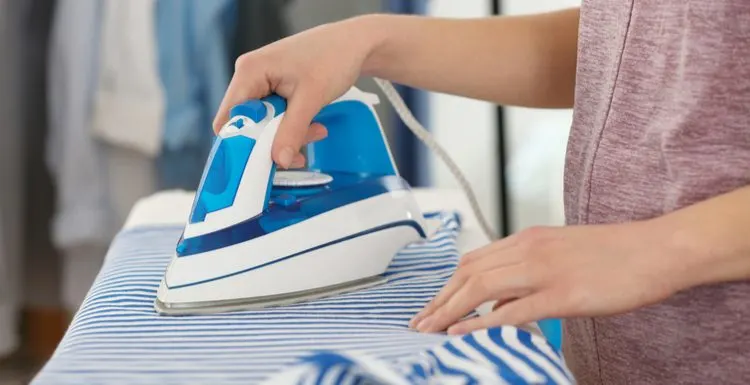Want to know how to iron curtains? You’re in the right place.
While most people don’t think about this, curtains often come wrinkled after being left in the package for so long. Read on to learn how to get them straight.
How to Iron Curtains: A Summary
Ironing curtains is simple. Follow these simple steps:
- Identify the fabric
- Clean the curtain
- Set up your ironing board
- Set up the iron
- Spray the curtain
- Iron the curtain
How to Iron Curtains in 6 Easy Steps

Petr Smagin/Shutterstock
Curtains are a lovely addition to any home’s décor. Curtains with intriguing designs and vibrant colors can liven up a dull space. However, if you don’t iron them properly, the creases will be an eyesore. Here is a review of the six steps that will help you learn how to iron curtains properly:
Identify the Fabric
Curtain manufacturers use a wide range of materials. Please read the care label to learn about the constituent elements of your curtain and how to approach the ironing process. Look for a tiny tag on your curtain if there are no care instructions on the packaging.
This label should include details such as the type of fabric(s) used to make those curtains and instructions for ironing them.
Take the curtains to a dry cleaner for expert wrinkle release treatment if they aren’t suitable for ironing. The dry cleaner will follow the manufacturer’s guidelines to ensure that your curtains remain of the same quality.
The best way to get fulfilling results is to follow the manufacturer’s directions. You risk damaging the fabric if you ignore the warnings in the instructions. In most cases, a regular steam iron will be sufficient for a typical session.
Clean the Curtain
The care label also gives instructions on how to clean the curtains. Depending on the material, you can either hand wash, dry clean, or use a washing machine. However, most curtains recommend machine washing. To do this:
- Use cold water to clean. Coldwater prevents shrinking and fading. Use a cold water delicate cycle to achieve this.
- Hang your curtains outside to dry or use low heat on a gentle cycle. Please avoid tumble-drying.
- You can wash your curtains in warm water first if they are dirty. Only do this if the care label recommends it.
- Use a delicate fabric detergent to achieve good results. If your curtains are colorful or dark, use a detergent that ensures the colors do not fade.
Set Up Your Ironing board
Move your iron board to a flat surface close to where you want to hang your curtains. Moving your iron board will reduce the chances of developing wrinkles during transportation. Hold the iron board on both ends.
One hand should be on the lever press button while the other stabilizes the opposite end. Lift the iron board’s surface by pressing the lever button and pulling the iron board’s surface simultaneously.
When you finish this process, you should be able to utilize an upright ironing board. Set up the curtain board in its highest position to facilitate a more effortless transfer of curtains from the board to the rod.
Ideally, the ironing board’s top surface should be level with your hips. If you prefer ironing while sitting, use the same button or lever to lower the ironing board to the desired height.
Set Up the Iron
You can use a regular steam iron, a garment steamer, or a handheld steamer. If you’re going to use a standard steam iron, make sure it has a rating of at least 1400 watts and can emit steam while being held upright.
Connect your iron to the electricity, and then wait for it to heat up. This process typically takes between five and ten minutes. Proceed to set yours to the appropriate fabric setting.
Spray the Curtain
Water helps the curtain fabric conduct heat. Spraying will ensure that the heat from the iron spreads uniformly on the curtain while ironing. Use a plant mister, spray bottle, or the spray feature on your iron.
Regular tap water will work fine unless the water is hard. If you have hard water, use distilled water to avoid discoloration of your curtains due to mineral buildup.
Iron the Curtain
Curtains have a large surface area, so your entire curtain will not fit on your board. It is best to iron one section at a time.
- Run your iron starting from the top to avoid missing any creases. Use curtain rod loops to identify the top side.
- Iron your curtain across the width until you remove all the wrinkles. Continuously adjust your curtain as you go further down. Let the wrinkle-free part hang off the end of the ironing board. Continue with this process until the wrinkle-free part is close to the floor.
- After ironing two-thirds of the curtain, hang the curtain on the rod and evenly distribute the gathered cloth along the rod to close the curtain entirely.
Hanging the curtain reduces the chances of more wrinkling and allows you to iron the bottom parts of the curtain.
Start steaming your curtain from the top part towards the bottom. It’s advisable to have someone assist you in holding the curtain. Ensure that the hot iron’s surface does not come into contact with the fabric.
Allow the steam to completely cover the iron before pushing the iron down along the length of the curtain. Do this procedure multiple times until you cover the entire surface of the iron.
To avoid the fabric drying out or burning, keep steaming while ironing. After removing all the wrinkles, please turn off your iron and unplug it from the mains.
Things to Consider

Irene and Andrew/Shutterstock
Now that you can iron your clothes like a professional, there are some things that we think you should keep in mind. These include:
- Do not spot iron. Trying to iron one part of the curtain repeatedly will shrink the fabric surrounding that area. If you encounter a stubborn wrinkle, let the curtain rest and then repeat the process later.
- Follow the manufacturer’s instructions; curtains are different. If the manufacturer advises you not to do something, it would be unwise to do the opposite.
- Do not let the iron sit idle on your curtain. When ironing a curtain, it’s critical to keep the iron moving across the fabric. Allowing it to sit idle in one location will result in a burn.
The temperature of an ordinary iron can quickly approach or surpass 400 degrees Fahrenheit. When the iron is moving, that amount of heat is usually insufficient to damage typical curtain fabrics. Keep the iron moving across your curtain at all times to keep this from happening.
- Check the label. You cannot iron all curtains. If your curtain has synthetic materials in it, ironing will likely damage the fabric.
- Move the freshly ironed surface away from you. When ironing, keep moving the freshly ironed surface away from you to prevent wrinkles.
So, How Do You Iron a Curtain?
To properly iron a curtain, you need the right tools, an understanding of care labels, and a level of concentration. Possibly, you won’t get it right the first time. Consistency and patience are all you need to develop this skill.
Now that you know how to iron a curtain, we hope that this guide will make your curtain ironing experience easier and more rewarding.

